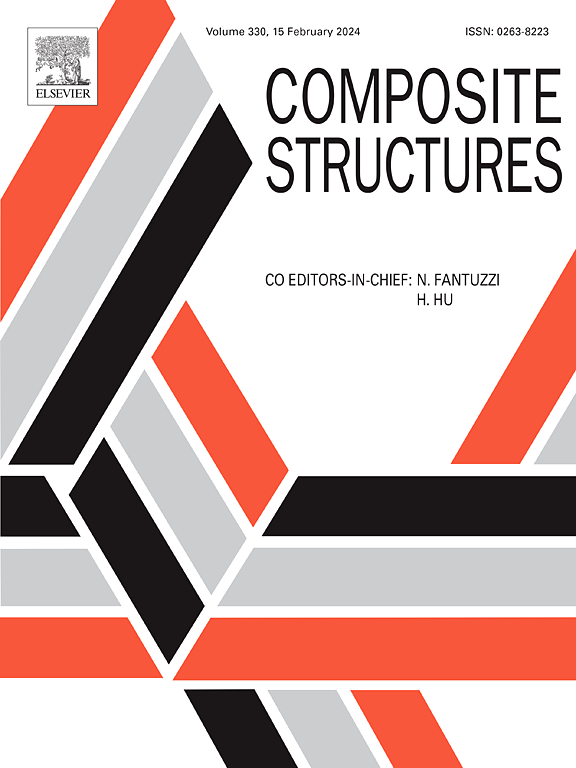Simulation of biodegradable behaviour of magnesium wire/polylactic acid composite for bone fracture healing under human body environment
IF 6.3
2区 材料科学
Q1 MATERIALS SCIENCE, COMPOSITES
引用次数: 0
Abstract
This study was aimed at developing a technique for simulating the material degradation of a biodegradable composite comprising magnesium wires as reinforcement and polylactic acid as the matrix using a phosphate-buffered saline (PBS) solution in a simulated human body environment. For accurate simulation, parameters like the diffusion coefficients of each component of the composite were considered by referring to previous researches on degradation experiments of magnesium alloy and PLA in human body environment. The chemical reaction with the PBS solution and material dissolution were also simulated, utilising element deletion under the appropriate criteria. The PBS uptake rate and changes in mechanical properties were estimated by finite-element analysis, and the diffusion coefficients for each component were calibrated using experimentally acquired data, such as the PBS uptake rate of the composite specimen. A bone plate with screw holes for fastening fractured bones was simulated, and the degradation in material and mechanical properties was estimated to assess the serviceability, such as the load-carrying capacity, of the biodegradable composite as prostheses.
求助全文
约1分钟内获得全文
求助全文
来源期刊

Composite Structures
工程技术-材料科学:复合
CiteScore
12.00
自引率
12.70%
发文量
1246
审稿时长
78 days
期刊介绍:
The past few decades have seen outstanding advances in the use of composite materials in structural applications. There can be little doubt that, within engineering circles, composites have revolutionised traditional design concepts and made possible an unparalleled range of new and exciting possibilities as viable materials for construction. Composite Structures, an International Journal, disseminates knowledge between users, manufacturers, designers and researchers involved in structures or structural components manufactured using composite materials.
The journal publishes papers which contribute to knowledge in the use of composite materials in engineering structures. Papers deal with design, research and development studies, experimental investigations, theoretical analysis and fabrication techniques relevant to the application of composites in load-bearing components for assemblies, ranging from individual components such as plates and shells to complete composite structures.
 求助内容:
求助内容: 应助结果提醒方式:
应助结果提醒方式:


